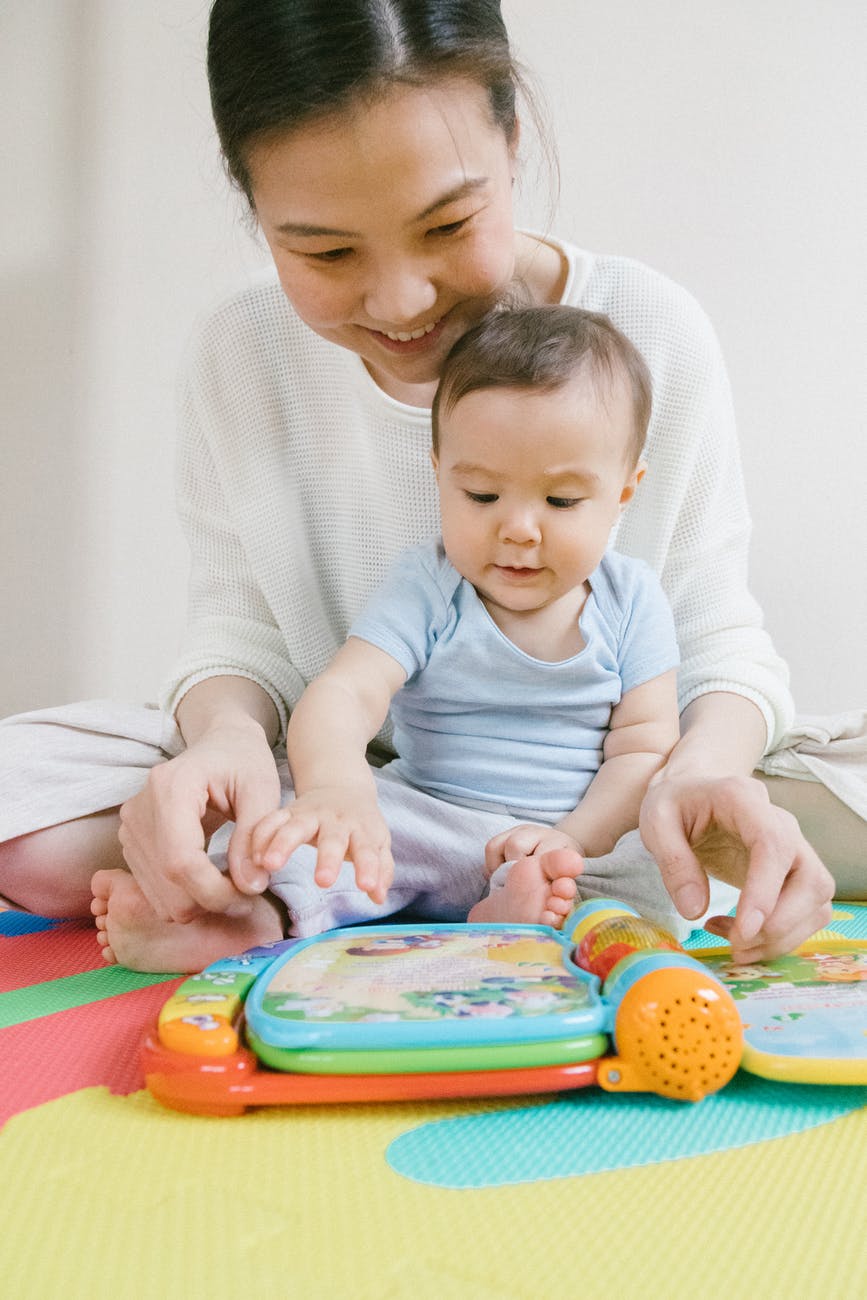Toys are more than just playthings. They are crucial for kids’ development at different stages of infancy. Playing with toys has a significant impact on many aspects of their early life. Besides making infancy fun-filled, toys help kids build cognitive and motor skills.
If all you know about toys are the plaything kinds of stuff, you need to learn more about toys and how they relate to infant development. This article will get you started. Let’s get down with business;
Toys for New Infants: 0-3 months
For the first three months after birth, babies don’t do much other than observe. They are getting accustomed to their new environments.
During this period, a baby’s sight is blurry. Only bright colors catch their attention. Sensory play that stimulates their senses is what they engage in. They are fascinated with sounds and movements.
The best toys to introduce at this stage are the ones with soothing sound and light. Musical toys with light, unbreakable mirrors, and brightly colored, multi patterned designs toys are best.
Toys for Young Infants: 3-6 Month
At this stage, babies are fascinated with what their hands and feet can do. They start practicing eye-hand coordination, grasping, and holding things.
You see them trying to lift their feet, turn their head towards sounds and reach for objects to put in their mouth. They go for anything they can grasp, squeeze, pull, kick, or shake.
This stage is also where kids start to learn to sit with support. The infant development toys for this stage are toys that allow babies to develop belly and rolling skills. Rattles, soft dolls, large rings, teething toys, soft dolls, and textured balls are ideal for this developmental stage.
Toys for Older Infants—7 to 12 months
Babies at this stage are typically movers. They’ve mastered sitting without support and crawling on hands and knees. They go from rolling over and sitting, to scooting, creeping, and pulling themselves up.
Here, infants want to explore, and are interested in cause and effect. This stage of baby development sees kids trying the same thing repeatedly in attempts to master them. They can identify objects, find hidden things, and transfer toys from hand to hand and into and out of containers.
Examples of good toys for this age are baby dolls and water toys. Toys to build like soft blocks and wooden cubes can also help.
Toys for Older Infants: 12-18 Months
This stage is when your kids start to experiment with things around them. They deliberately try out things to achieve specific goals. They try to figure out how things work and learn through trial and error.
The toys to introduce at this stage are problem-solving toys such as blocks and stackers. Shape sorters and containers to put in and take out objects.
Your kid is likely to start working at year one or thereabout and will be curious about their newfound mobility. They need toys that will teach them balance and coordination.
Toys that promote walking and environmental exploration such as standing push toys, push and go toys, and balls are the playthings for this stage.
Toys for Older Infants: 18-24 months
At this stage, your kid is not new to walking. Most kids would have mastered their steps at this age. They are now very mobile and interested in anything that will help them move around. They want to engage in more physical activities.
Push cars, stride and ride toys, and walkers are great toys to introduce at this stage. Ride-on toys help spark their creativity and imagination. At the same time, it refines their coordination skills and pushes them to solve problems and follow directions.
Conclusion
As babies grow, they go through different stages of development. Toys are more beneficial when they are seen as developmental tools for each stage of development. That way, parents can select age-appropriate toys that will help their kids play right and grow well.
Important: The safety of your kid is and should always be your first priority always. Thereby, make sure to look for toys with non-toxic materials always.

